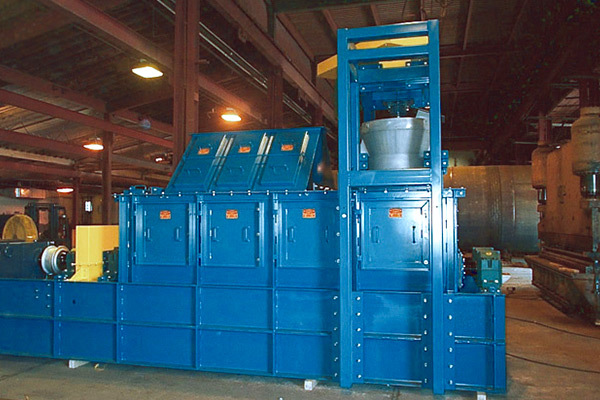Phosphorus is an essential component in the makeup of life on Earth. Not only is it a building block in growing healthy, strong plants, but it is also an important building block for humans and animals as well; most notably, phosphorus aids in a variety of cell functions to build strong bones and teeth, but it contributes to many other biological processes. As such, phosphorus is a key ingredient in animal feed granulation operations, particularly when it comes to Monocalcium Phosphate (MCP) and Dicalcium Phosphate (DCP).
While only about 5% of global phosphate consumption goes toward animal feed production, the production of phosphate animal feeds plays a critical role in maintaining livestock health and overall food security. And with demand for phosphate feed on the rise, the efficient production of such products will become increasingly important.
Preparing Phosphate Ore for Animal Feed Production
Phosphorus used in animal feed is first mined in the form of phosphate rock. In order to separate the phosphorus from the surrounding undesirable material, such as sand and clay, the phosphate-bearing ore must go through a beneficiation process. As phosphate rock deposits vary considerably in their makeup, the beneficiation process can differ greatly from one deposit to the next.
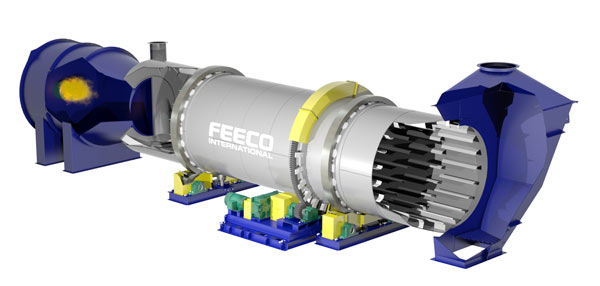
Once the phosphate ore has been beneficiated, it is then commonly dried in a rotary dryer. While other drying systems are an option, rotary dryers are most common because of their heavy-duty construction and high-capacity offerings. In some cases, processing in a rotary kiln may also be required at this stage if the phosphorus is contaminated, or found in the presence of organic materials that will necessitate removal.
Once the phosphate ore is dried, it can be reacted with sulfuric acid to produce phosphoric acid. Phosphoric acid is a versatile material, used in the creation of many products, but it is most commonly used in the production of phosphatic fertilizers and animal feeds.
MCP and DCP are created by reacting the phosphoric acid with calcium carbonate and granulating the resulting material. It is worth noting that animal feed was not always (and sometimes still isn’t) granulated, but granulation has proven to add significant value to the end product; a granular feed is much more easily handled, provides a more uniform product, and offers significantly less dust.
MCP and DCP Animal Feed Production
Traditionally, phosphoric animal feeds have been produced utilizing a Spinden reactor, a horizontal mixer/reactor similar to a pugmill mixer. While this approach yields effective results and is widely used throughout the animal feed industry, FEECO has improved upon the process through the addition of a high-speed mixer.
How Feed Granulation with a High-Speed Mixer Works
Phosphoric acid and limestone (calcium carbonate) are fed into the high-speed mixer. The mixer is comprised of a vertical chamber with a paddle shaft running through the middle, which rotates at 300-400 RPMs to create an intense mixing action.
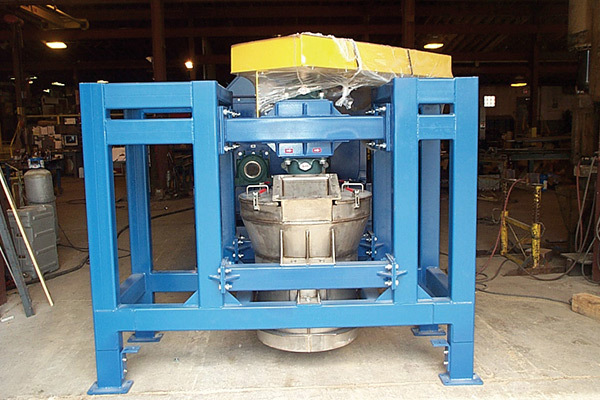
FEECO High-Speed Mixer
This intense mixing step serves to create a more homogenous mixture, and subsequently, a better reaction of the materials. The high-speed mixer thoroughly mixes the materials, and then drops them via gravity into the pugmill mixer on which it is mounted.
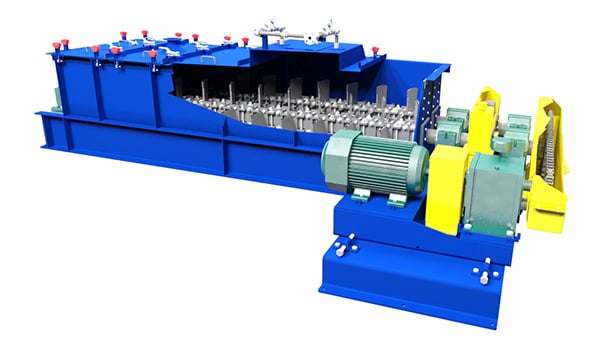
The pugmill mixer completes the reaction, and granulates the mixture as it moves down the length of the mixer. Once the mixture has been granulated, it exits the pugmill mixer and is carried by conveyor to a rotary dryer. The dryer removes the desired amount of moisture from the product and further polishes and rounds the granules. After drying, undersize and oversize material are screened out and fed back into the process as recycle, with oversize pellets first going through a grinding step in a chain mill. On-size product can move on to packaging, shipping, or storage.
The FEECO granulation process described above is illustrated in the diagram below: (Click image to view larger)
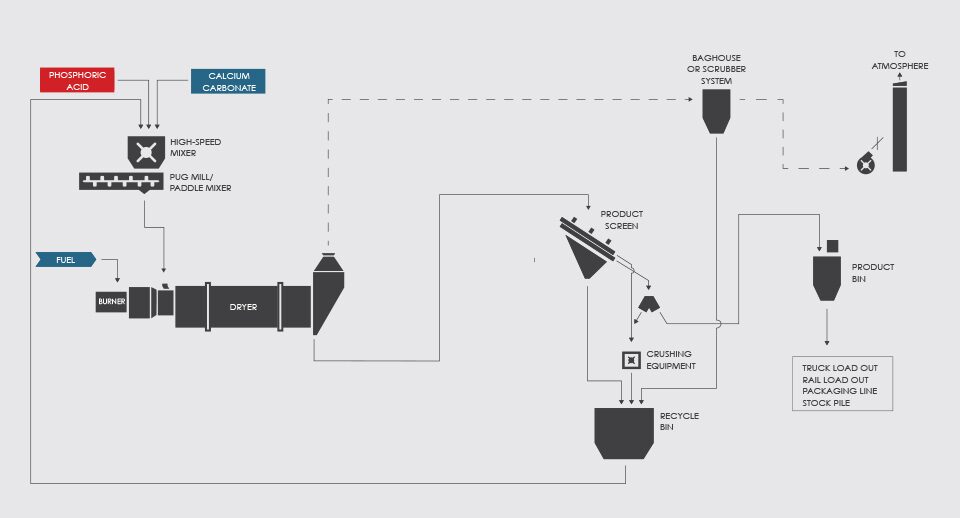
Benefits of the High-Speed Mixer Approach to Animal Feed Granulation
The FEECO animal feed granulation process utilizing a high-speed mixer offers significant value over the traditional approach to animal feed granulation.
The mixing step in a granulation process sets the stage for the quality of the end product. The addition of a high-speed mixer offers a more intimate mixing of the materials. This not only improves the uniformity of the pellet, but it also results in a better reaction of the materials, yielding a higher quality pellet.
FEECO has been working in the agriculture industry since 1951, providing advanced process solutions and equipment. We continue to lead the way in material testing, custom equipment, and process design. The FEECO approach to producing Monocalcium Phosphate and Dicalcium Phosphate is an improvement on the traditional approach, offering increased product quality.
For more information on animal feed granulation utilizing the high-speed mixer approach, contact us today!

